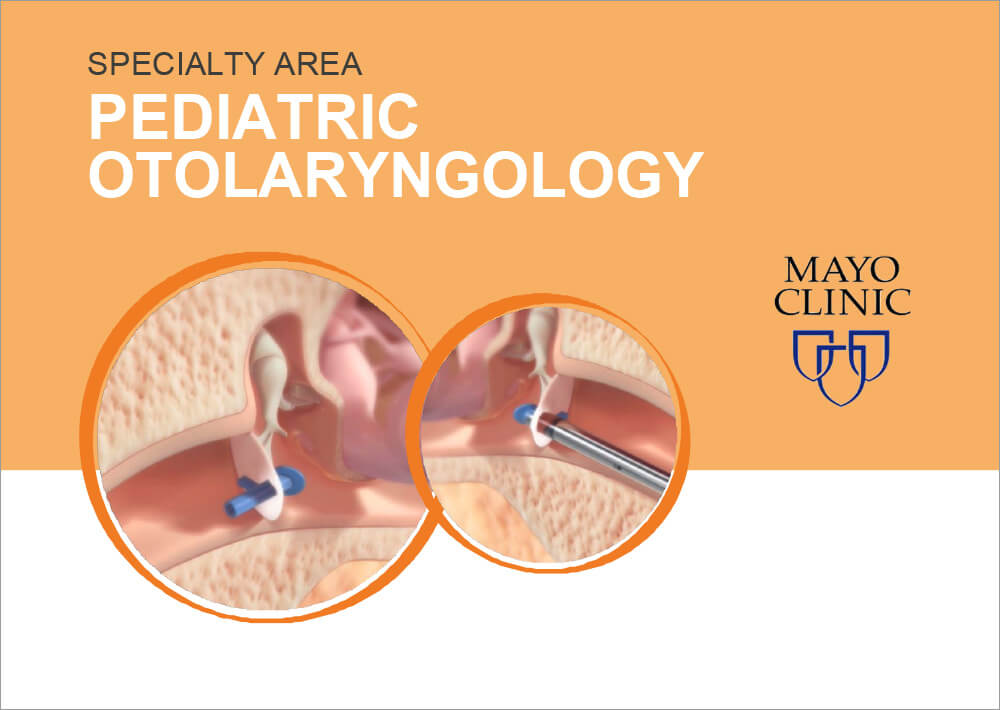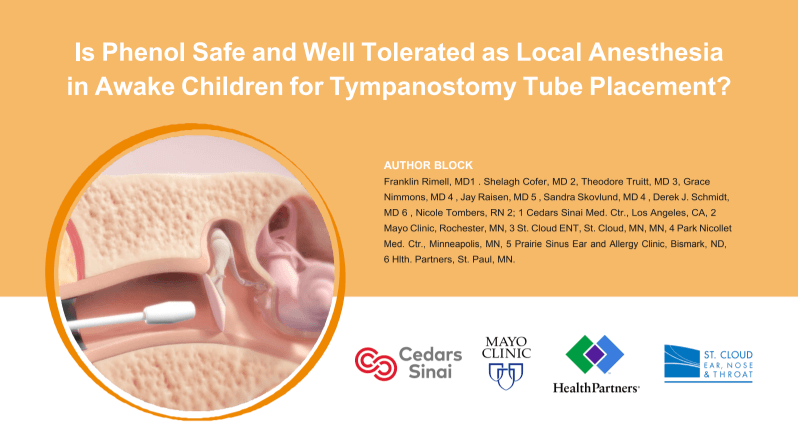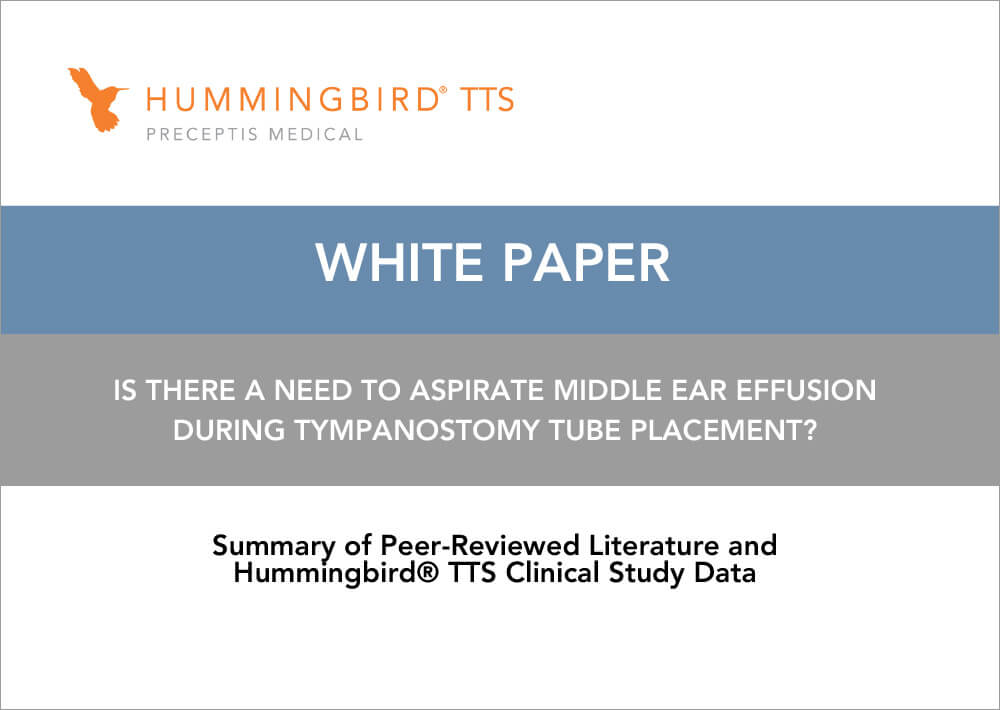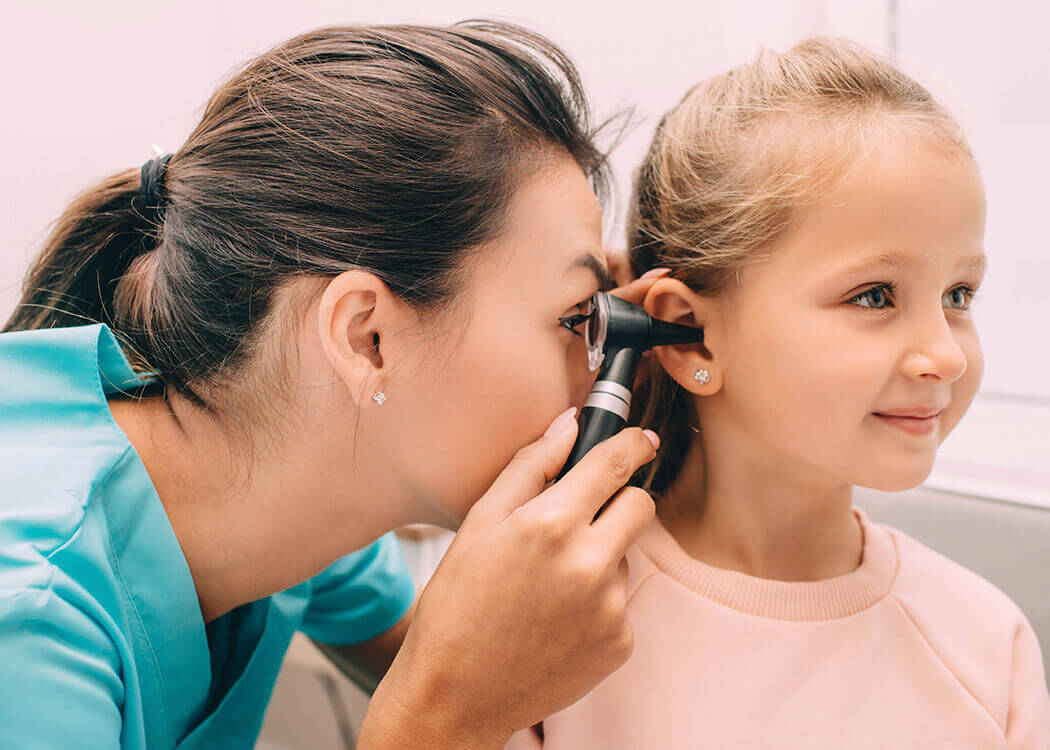Proven Hummingbird TTS Clinical Evidence
Safety and Effectiveness
The FDA-cleared Hummingbird has been studied extensively. The device has demonstrated the following performance in clinical studies.
Hummingbird Office Clinical Study
6-24 months (n=210), 2-5 years (n=18), 6-17 years (n=30) = 258 patients total 1
Children successfully received ear tubes in-office
The Hummingbird TTS delivers a standard ear tube in one pass, eliminating multiple steps with additional instruments and is proven to deliver strong outcomes in the office.
Parents would recommend the procedure to others
Parents can be present with their child throughout the entire procedure to comfort their child and provide support for the ENT and staff.
Patients acceptably tolerated the procedure
An independent panel of three physicians evaluated procedural videos for FDA clearance and determined that 100% of patients tolerated the procedure acceptably.
Proven Benefits of the Hummingbird for Your Practice
Supported by groundbreaking research and real-world results, the Hummingbird Tympanostomy Tube System is transforming pediatric ear care. Designed for safety, comfort and efficiency — it empowers physicians to provide a seamless, in-office experience that’s as effective as it is convenient.

In-Office Insertion of Tympanostomy Tubes in Children Using Single-Pass Device
02/02/2021
Two hundred twenty nice children (444 ears) were treated at 10 sites. Children were in age groups 6‐24 months (n = 211, mean = 13 months) and 5‐12 years (n = 18, mean = 8.3 years). Results showed that in‐office TT placement in young children is a safe and tolerable option for parents who desire an alternative to GA for their children. TT placement was completed in the office in 98.7% of the cases, and the median procedure time for bilateral TT placement was under 5 minutes. Additionally, for parents, an in‐office approach provides increased convenience and reduces the burden of additional health care visits.
Read more
Assessment of In-Office Tympanostomy Tube Insertion Tolerability in Children Under 2 Years
03/01/2021
Tolerability of the procedure was assessed by multiple methods (standardized video review by independent experts, assessment by the otolaryngologist and staff, and parental feedback) and was determined to be universally well tolerated in young children.
Read more
AAO Position Statement on In-Office Placement of Tubes in Pediatric Patients While Awake
04/21/2021
Although insertion of tympanostomy tubes in children is generally accomplished in the operating room under general anesthesia, insertion in the clinic in appropriately selected patients using shared decision-making between clinicians and families can be appropriate.
Read more
Use of Topical Phenol in Awake Young Children for Tympanostomy Tube Placement
03/10/2021
A total of 228 children (435 ear drums) with an age range of 6 months to 15.9 years completed tympanostomy tube placement using Phenol as a local anesthetic while in the office. There were no complications reported, and Phenol appears to be tolerable and safe for use in young children in the office.
Read more
Is there a Need to Aspirate Middle Ear Effusion During Tympanostomy Tube Placement?
09/15/2023
Otolaryngologists are taught as residents to aspirate (i.e., suction) middle ear effusions (MEE) during tympanostomy procedures. However, what are the arguments for doing this and is it necessary? Peer-reviewed literature and Hummingbird device clinical data demonstrate that aspiration of MEE did not significantly affect tympanostomy tube plugging or early extrusion rates for both traditional and one-pass tympanostomy procedures. These analyses affirm the hypothesis that aspiration of MEE is not necessary during tympanostomy tube placement.
Read more
Executive Summary of Clinical Practice Guideline on Tympanostomy Tubes in Children (Update)
02/21/2022
This executive summary of the guideline update provides evidence-based recommendations for patient selection and surgical indications for managing tympanostomy tubes in children. Risks and potential adverse events of tympanostomy tube insertion are related to general anesthesia, usually required for the procedure and the effects of the tympanostomy tube on the tympanic membrane and middle ear. Risks associated with general anesthesia can be eliminated by inserting tubes in the office setting without general anesthesia, when appropriate, based on shared decision-making between the clinician and family. Tympanostomy tube sequelae are common but generally transient (otorrhea) or usually do not affect function (myringosclerosis, focal atrophy, or shallow retraction pocket of the tympanic membrane).
Read more
FDA Drug Safety Communication: FDA Review Results in New Warnings About Using General Anesthetics and Sedation Drugs in Young Children and Pregnant Women
04/27/2017
[ 12-14-2016 ] The U.S. Food and Drug Administration (FDA) is warning that repeated or lengthy use of general anesthetic and sedation drugs during surgeries or procedures in children younger than 3 years or in pregnant women during their third trimester may affect the development of children’s brains. Health care professionals should balance the benefits of appropriate anesthesia in young children and pregnant women against the potential risks, especially for procedures that may last longer than 3 hours or if multiple procedures are required in children under 3 years. Discuss with parents, caregivers, and pregnant women the benefits, risks, and appropriate timing of surgery or procedures requiring anesthetic and sedation drugs. Parents and caregivers should discuss with their child’s health care professional the potential adverse effects of anesthesia on brain development, as well as the appropriate timing of procedures that can be delayed without jeopardizing their child’s health.
Read more



